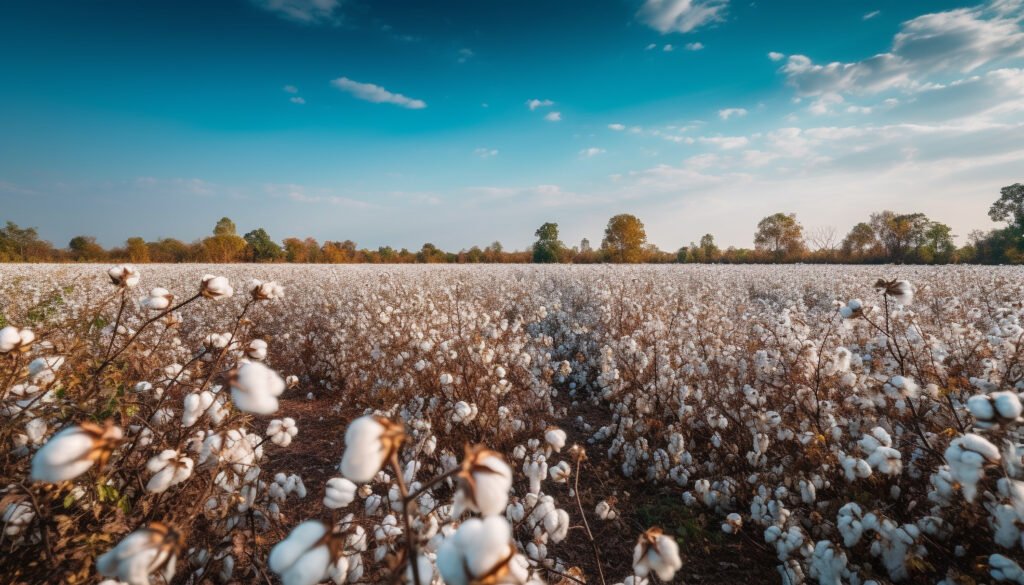Latest News
Punjab Farmers to Get 33% Subsidy on Bt Cotton Seeds Under New Crop Shift Initiative

A 33% subsidy on Bt cotton seeds for Punjab farmers in the 2025 kharif season is a major step taken by the Punjab government to encourage crop diversification and sustainable agriculture. This project intends to provide farmers with a lucrative alternative crop with high market demand, preserve groundwater, and lessen the state’s excessive reliance on rice production.
Punjab, which is well-known for its vast wheat and paddy fields, is dealing with two crises: depleting groundwater supplies and soil exhaustion from ongoing monoculture. In the state’s larger crop shift plan, Bt cotton is becoming a favoured substitute due to its lower water requirements.

Concerning the Punjab Farmers Bt Cotton Seed Subsidy Program
Farmers that want to grow Bt cotton will be eligible for a 33% subsidy on certified seed types as part of this program. The program will be implemented by the Punjab Department of Agriculture and Farmers Welfare via authorised seed wholesalers, Krishi Vigyan Kendras (KVKs), and local agricultural offices.
Principal Features:
✅ 33% discount on authorised Bt cotton seed types
✅Direct benefit transfer (DBT) to farmer accounts that qualify
✅ Focussing on areas where groundwater stress has traditionally been high
✅ Contains instruction and guidance for new cotton farmers.
Why the Transition from Paddy to Cotton Is Important
Punjab’s declining aquifers are severely strained by the state’s paddy agriculture, which uses more than 5,000 litres of water every kilogramme of rice. Cotton—particularly Bt cotton, which is genetically engineered for pest resistance—can be a practical, less water-intensive substitute, according to the state’s agricultural experts.
Additionally, cotton offers farmers stronger market linking chances because to its high local and worldwide demand, particularly in the textile industry.

Soft cotton plant in golden sunset meadow
Benefits of Using Bt Cotton
1. Less Infestation of Pests
One of the most damaging pests in cotton production, bollworm, is something that Bt cotton is designed to withstand. As a result, less insecticide is used, which decreases input prices and has a smaller environmental effect.
2. A Lower Need for Water
Bt cotton is perfect for Punjab’s present groundwater circumstances since, in contrast to paddy, it grows well with minimal irrigation.
3. Increased Profitability
Farmers may make more money per acre with the subsidies and lower input costs, particularly if they choose high-yielding hybrids.
4. Assistance from the Government
To assist farmers thrive in the transition, the Punjab government is providing technical training, agronomic advice, and market connections in addition to the seed subsidies.
♠️ Difficulties to Think About
1. First Adaptation
There may be a learning curve for farmers switching from paddy to cotton, particularly when it comes to post-harvest handling, fertiliser cycles, and insect management.
2. Variability in the Market
Despite the high demand for cotton, fluctuations in local and international prices might have an impact on farmer income if minimum support price (MSP) measures are not used.
3. Adequacy of the Soil
Because of differences in climate, salinity, and soil types, not all areas in Punjab are suited for growing cotton. Planning for a particular site is essential.
FAQs, or frequently asked questions
1. Who is qualified for Punjab’s Bt cotton seed subsidy?
All Punjabi registered farmers who want to plant Bt cotton in 2025 are qualified. Farmers in water-stressed regions or those who are actively cultivating paddy may be given preference.
2. How does a farmer submit an application for the subsidy?
Farmers are able to:
Go to the agricultural office or Krishi Vigyan Kendra (KVK) that is closest to them.
Use the Punjab Agriculture Department’s official website to apply.
Speak with approved seed distributors who are taking part in the program.
Following verification, the subsidy would be disbursed by Direct Benefit Transfer (DBT).
3. Which kind of Bt cotton seeds are eligible for the subsidy?
Eligibility is limited to Bt cotton hybrids that have been certified and authorised by the government. The department’s website and nearby agri offices will provide a list of approved cultivars.
4. What advantages does cultivating Bt cotton have over conventional cotton?
Bt cotton provides:
Bollworm resistance
Increased yields per acre
Decreased use of pesticides
Reduced cultivation costs
5. Will new cotton producers get assistance or training from the government?
Certainly, the Department of Agriculture will provide:
Ground-based training sessions
Field visits by experts
Local language printed guides
Availability of agri-helplines for immediate enquiries
6. Is the subsidy available to small and marginal farmers?
Indeed. Small and marginal farmers are urged to join the inclusive program. The government wants to make sure that the advantages of subsidies are distributed fairly.
7. Will the subsidies be available beyond 2025?
Although this is a seasonal strategy at the moment, its continuation will be contingent upon:
Adoption rates among farmers
The crop shift’s success
Allocated funds for the next fiscal
8. Does India have approval and safety for Bt cotton?
Indeed. Over 90% of India’s cotton land is planted to Bt cotton, which has been authorised by the Genetic Engineering Appraisal Committee (GEAC).
Concluding Remarks
A step in the right direction towards rebalancing the state’s agricultural landscape is Punjab’s decision to provide a 33% subsidy on Bt cotton seeds. In addition to addressing environmental issues, the program opens the door for more sustainable and lucrative agricultural methods by encouraging crop diversity.
Bt cotton offers a feasible route to resilience and revenue development in 2025 and beyond for farmers who are prepared to accept change.












